Persona 4 Arena Ultimax, sequel to Persona 3, Persona 4, and Persona 4 Arena, is a fighting game. However, unlike many fighting games, it comes with a robust story in the form of a 14-hour visual novel. And since we’ve looked at Ultimax as a fighting game already, it’s only fair we look at it as a visual novel as well.
If there was one problem with Arena‘s story mode, it was that each character’s story contradicted all the others in what happened. After all, in Arena first game, the loser of any battle was forced to remain locked in the area he or she lost in. Thus, anyone who lost couldn’t continue on toward the end of the game.
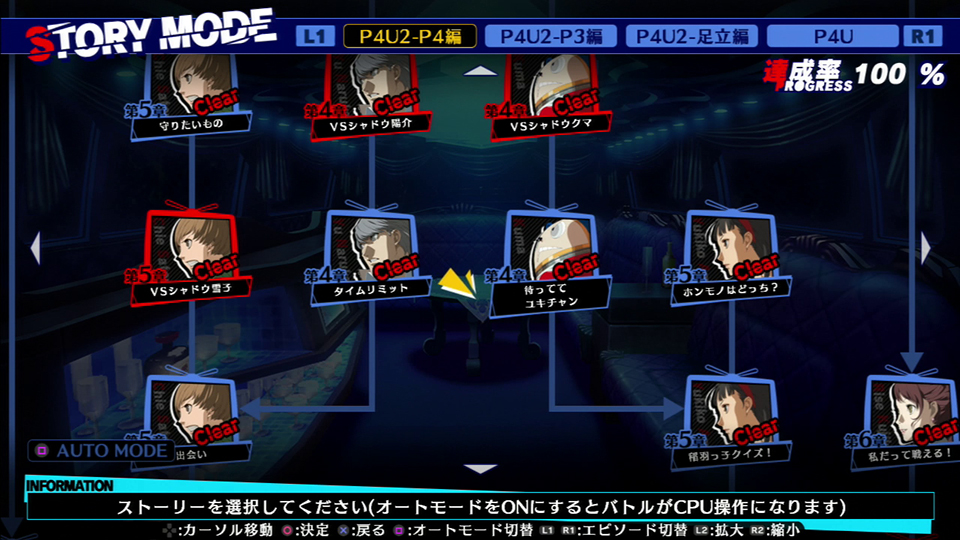
Ultimax largely fixes this by having only two possible ways the story could go: The Persona 3 route or the Persona 4 route. As you play either of the two versions of the story, the game constantly boots you back to the main story tree after major events, making you play through what the other characters were doing at the same time. Once you have the whole cast caught up, you then unlock the next set of scenes and repeat the process. It makes for a bigger plot where everyone has something to do and it works well overall.
While all the characters from Persona 3 and 4 have roles to play in both versions of the story, the central heroes change depending on which story version you choose. And as the game makes you cover the Persona 4 route first, let’s do the same here.
Episode “P4”
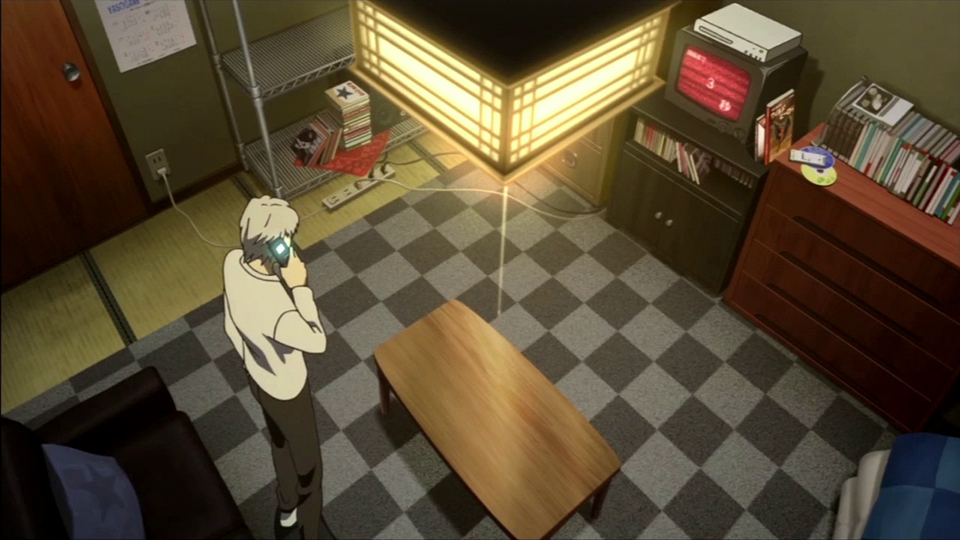
In the Persona 4 telling of the story, occurring a few days after the events of Arena, Yu stays up to watch the midnight channel. He is shocked to find that immediately after it showcases them all in another fighting tournament, the moon turns red and all electronics stop working.
Moreover, as no one but Yosuke and he even thought to check out the midnight channel, the investigation team is spread out all over the city with no way to contact each other. Chie is walking her dog, Rise is coming home from a late practice, Naoto is at the police station, and the others are at their homes. Thus, the first part of the story is the group wandering through the shadow-twisted town, hunting for each other before converging on their school which has been transformed into a giant, ominous tower.
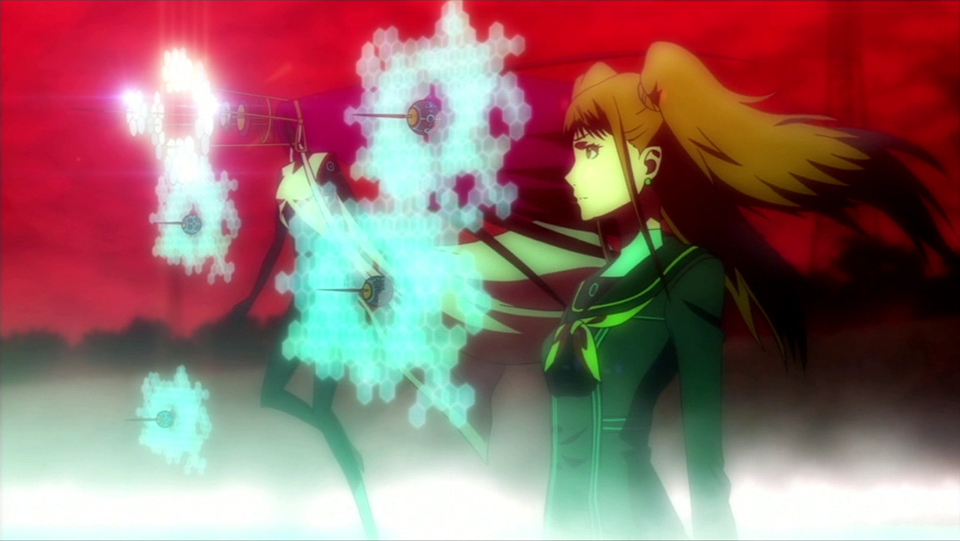
As the only new (non-DLC) playable Persona 4 character in the game, it’s no surprise that Rise is the Persona 4 character to get the most development in Ultimax. Throughout Persona 4 and Arena, Rise played the role of supporter to the group. However, during the events of Arena she is not only captured and rendered useless but is replaced by an evil fake as well. Thus, she feels more than a little pain and self-pity as, unable to contact the rest of the group because of telepathic interference and also unable to fight, she finds herself nearly powerless in Ultimax as well. Her internal rebellion against being helpless once again has not only personal ramifications for her character but also implications for her Persona. It’s some good character building that works in tandem with the end of her story arc in Persona 4.
Unfortunately, as the story goes on, the focus moves away from Rise and centres more on Yu. Yu, as the player character in Persona 4, doesn’t really have an independent personality. Rather, the player’s actions in the game define his personality. So when you don’t have full control over what he says and does, as is the case in Ultimax, he is particularly one-note — i.e., your stereotypical lawful-good hero. And while Sho, the villain of the story, is a lot of fun in his presentation and dialogue, even he can’t make Yu any less than bland.
Episode “P3”
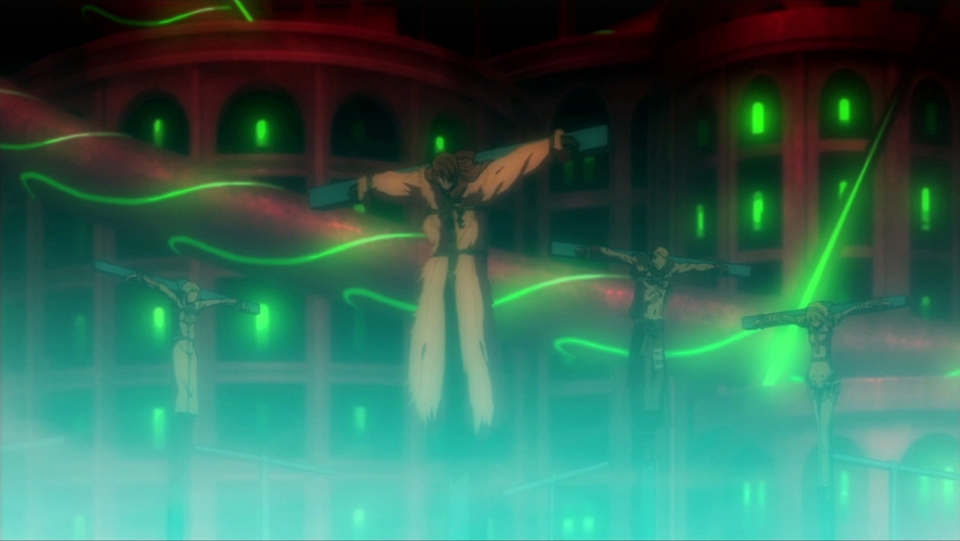
The Persona 3 side of the story begins with the capture of the Persona 3 characters that appeared in Arena — namely Mitsuru, Aigis, Fuuka, and Akihiko. This means that the reserves need to be called in to mount a rescue — in this case Ken, Koromaru, Junpei, and Yukari. By removing Arena‘s Persona 3 characters from the first half of the story, the newcomers get to take center stage. Yukari and Junpei’s stories are largely comical as they encounter the various Persona 4 characters while they hunt for each other. It’s generally a lot of fun.
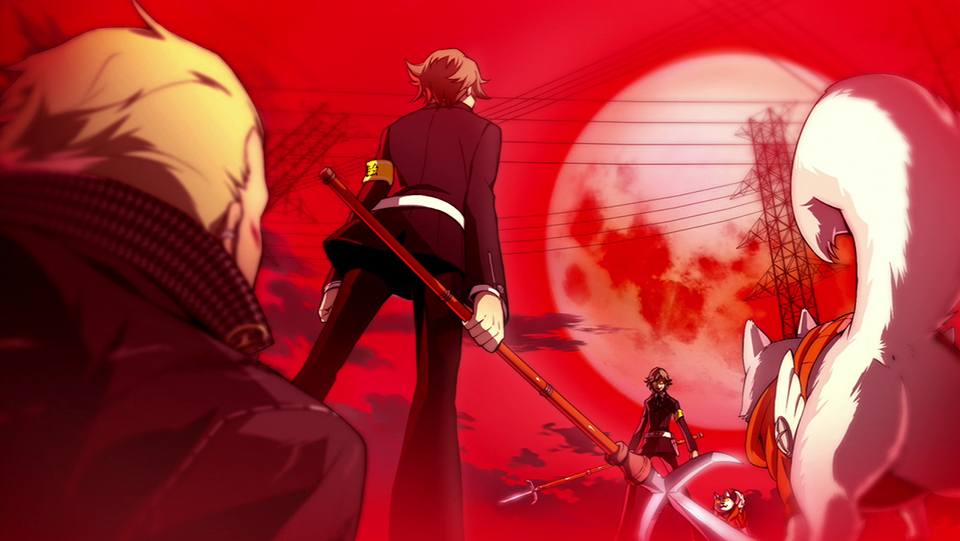
However, as Rise got the most development in the Persona 4 story mode, Ken receives it in the Persona 3 one. While all the other characters have moved on with their lives, most still work together or at least see each other on a semi-regular basis. Ken, however, being so much younger than the others, is isolated by the simple fact that he is a middle schooler and they are working adults. He feels abandoned — like he has been left behind because he isn’t able to pull his own weight. Thus for him, Ultimax is the story of his coming to terms with the idea that while he is currently not part of the group as he was during Persona 3, he doesn’t have anything to worry about — that they shared something beyond special and now the rest of the old SEES team are just waiting for him to grow up and rejoin them.
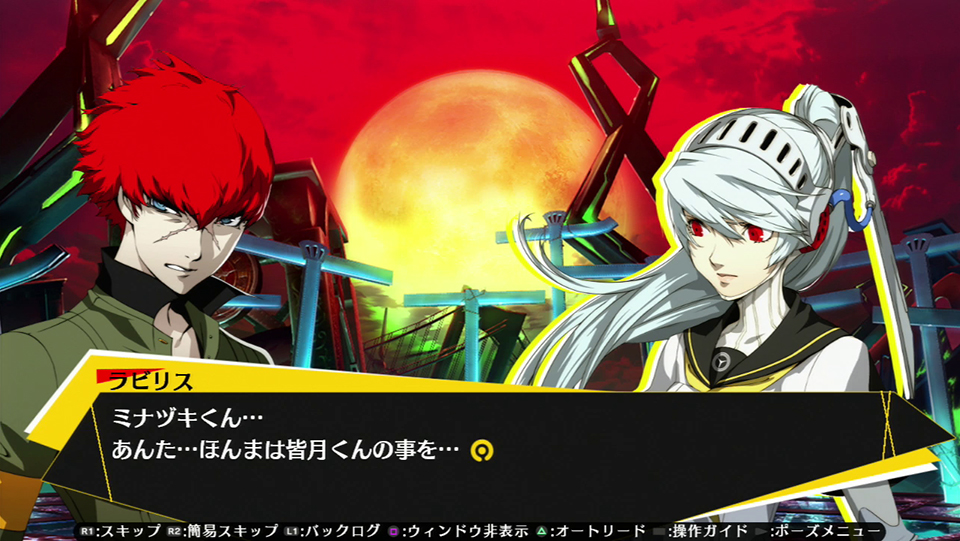
Although Ken may get the most development of any Persona 3 character in the game, it’s not his nor any other Persona 3 character’s story: It’s Labrys’. As Ultimax takes place just a few days after Arena, Labrys is just starting to adjust to a normal life with the shadow operatives. And, as the Persona 3 characters are kind and forgiving people, she has found herself welcomed with open arms. She has true human friends for the first time in her life. Thus, when the others are captured, she immediately heads to their rescue. But it’s how she plays off Sho that makes her steal the show.
Instead of the expected interaction seen with Sho being the cackling, insane bad guy and Yu the goodie goodie hero, we have something far deeper between Labrys and him. While Sho looks at Labrys as something between a doll and trash, Labrys identifies with Sho and his pain. As someone who was abandoned herself, grew to hate humans, and had given in to the darkness within herself, she feels that they share something fundamental. Her drive to save him is in some ways a way to save herself — to pass on her own redemption in Arena to another. This makes for a far deeper and more meaningful conflict than when Yu takes the lead in the Persona 4 version of the story.
Episode “Adachi”
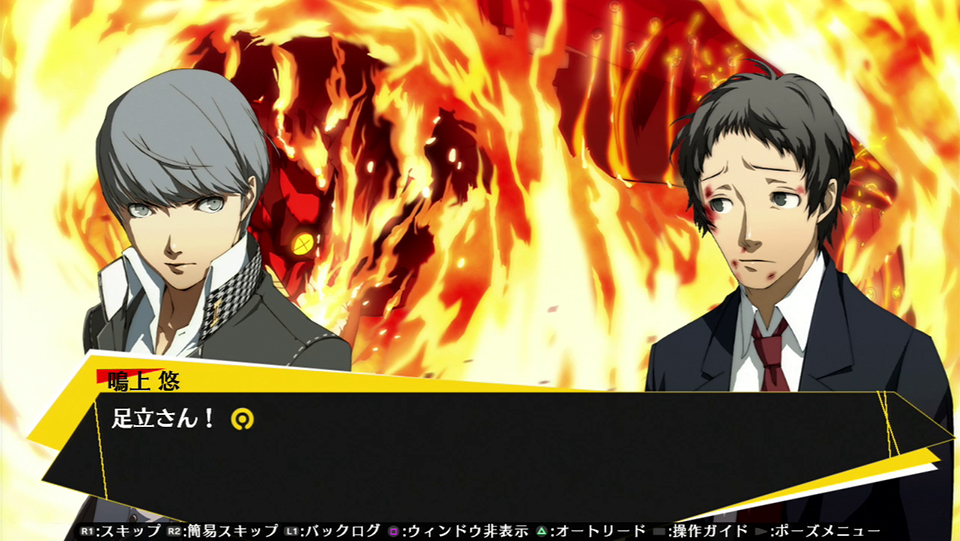
In the Japanese special edition of the game (and also available as DLC), there is a third (two-hour) version of the story: Adachi’s. Adachi’s route, however, is simply a retelling of the Persona 4 story mode from his point of view. And as it often shows the same scenes word for word — only now with Adachi’s thoughts visible — it is often a direct rehash of what you have played before. In fact, all of Adachi’s plans and motivations are pretty much apparent in the Persona 4 route; so seeing things from his point of view adds very little to the overall story.
It’s All a Bit Corny
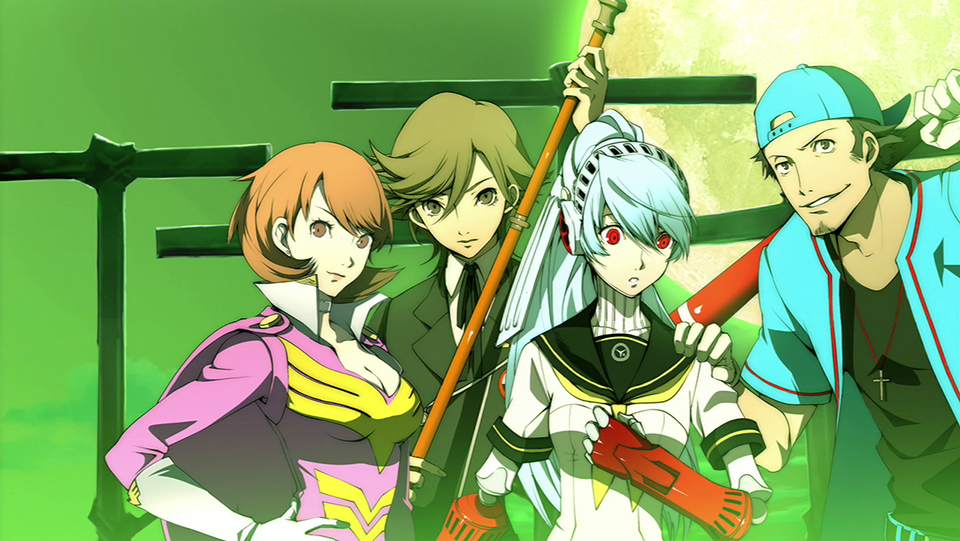
If there is one issue I had with Ultimax, it’s that while there is a lot of depth in the various plots, the constant talk of “bonds” gets really corny really fast. While, of course, Persona 3 and 4 are very much about creating relationships with those around you, continuously talking about the power of friendship for long stretches can be a bit much. Moreover, the overuse of the word “bonds” as an alternative for the word “friendship” always seems a bit weird. Maybe it’s because “bonds” has so many other connotations.
Voice Acting
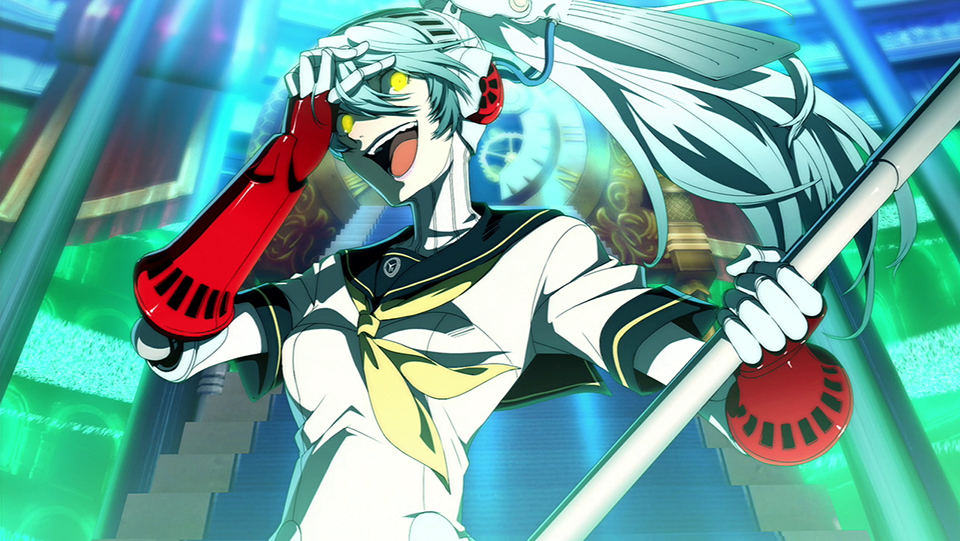
But the story isn’t the only important thing in a visual novel — there is also the voice work which makes the story come alive. While I had only played with the Japanese voice track in Arena, this time I opted to try the English track. For the most part, it ranged from decent to stellar, especially with Johnny Yong Bosch playing both Yu and Adachi. It was great to hear all the voices from Persona 3 once again.
However, there is one voice that is a little grating, and while I love Labrys as a character, that accent of hers makes ears bleed and puppies cry. In the Japanese, she has a Kansai accent (typically associated with Japanese gangsters). For some reason, she is given a Boston accent in the English dub — and a not very convincing one at that. It often made even her serious lines come off as comical — which is not something you want in your dramatic lead.
Final Thoughts
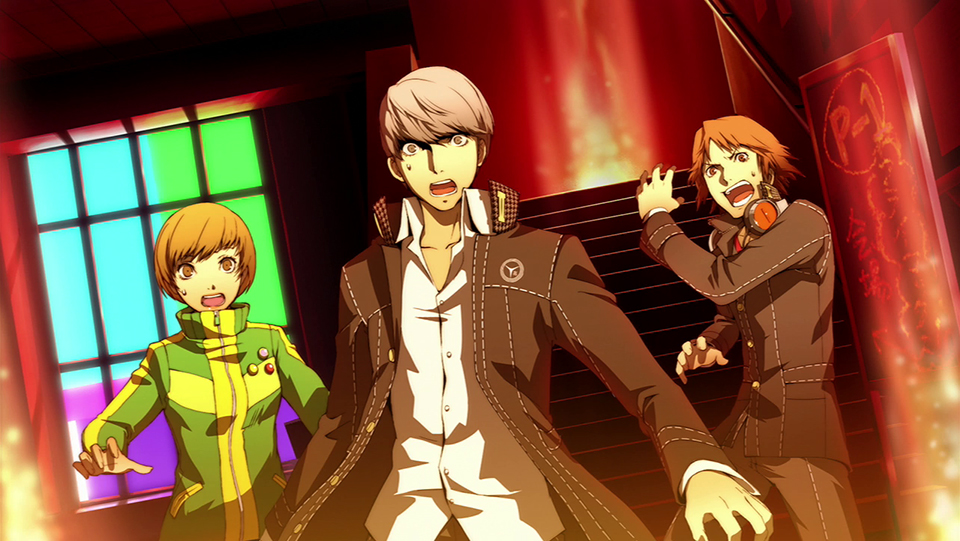
As a standalone visual novel, Persona 4 Arena Ultimax is nothing special. However, as a sequel to Persona 3, 4, and Arena, it works well — adding to the series’ lore and developing some of the characters in logical, emotional ways. If you are at all invested in the Persona 3 or 4 stories and characters, this is a must play. And don’t worry if fighting games aren’t your thing, the game even has a feature where it will do the battles for you.
Persona 4 Arena Ultimax was released in Japan on August 28, 2014, for the PlayStation 3. It will be released in North America on September 30, 2014.
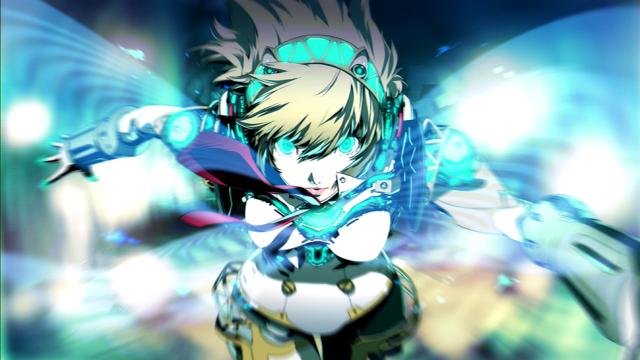
Comments
One response to “Let’s Look At Persona 4 Ultimax As A Visual Novel, Not A Fighting Game”
Hyped